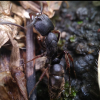My Odontomachus queen acting strange. I know she laying more than one egg (and its more than 1 batch around 4 each batch) but i only see 1 larva. is she feed her egg to larva? or she ate it her self? I'm sure i provide her with enough food.
Edited by Dnail, May 12 2018 - 8:06 PM.

















